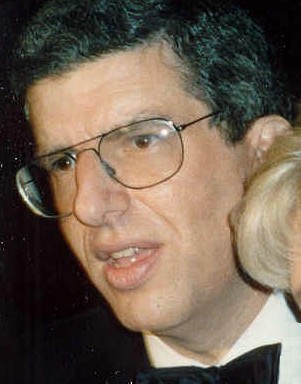A number of people whose work has caught my interest over the years have passed away recently, and while I let a couple of them slip, I thought I’d take note of them all in this post:
Robert Hughes
The Australian art critic died on Monday at age 74. He made art scholarship accessible to the public by writing in a plain, argumentative, highly readable style. His 1980 TV series and accompanying book The Shock of the New are an indispensable guide to 20th-century art, and his 2002 critical biography of Goya plumbs the artistry of the singular Spanish painter. He also appeared in Terry Zwigoff’s 1994 documentary Crumb, detailing the achievements of the artist Robert Crumb. Yet Hughes was more than just a scholar. He was a titanic figure in the world of letters, who did a great deal to ensure that Australian literature was taken seriously, particularly in his history volume The Fatal Shore, which studied 18th-century British penal practices as an entry point into the history of Australia. Some of his compatriots were suspicious of him because he left Australia at an early age to make his reputation in Britain first and then America. Then in 1999, he caused a serious car accident in his native land by driving on the wrong side of the road, and his combative conduct in the accident’s aftermath dealt a permanent blow to his reputation at home. Some Australians are regretting that now. But then, Hughes never cared that much for public adulation. He lived his life defiantly on his own terms, and left us wiser.
Chris Marker
Back in college, I was shown Marker’s Letter From Siberia as part of a film course. As the beginning unfolded by explaining the history of woolly mammoths, I settled in for a dry educational film. Then something weird happened. The film broke into an animated sequence of marching mammoths while the droning narrator recited in a singsong rhythm: “Mammoths, mammoths from Siberia / Only dreamed of spending winter in Paris / Fleeing ukases and knout.” That made me sit up in my chair. The French filmmaker was born Christian François Bouche-Villeneuve in 1929, but adopted an alias inspired by the term for a clapperboard. His films broke away from traditional objective documentary format and helped establish the now-common essay film, adopting the viewpoint of a curious observer. Another sequence in Letter From Siberia features a montage of life in the Soviet Union that’s repeated three times. The visuals are exactly the same, but the underlying narration changes to give positive, negative, and neutral views of life in the USSR, highlighting the ways in which filmmakers often influence a seemingly objective form. His most famous work may well be his 1963 short film La Jetée, which Terry Gilliam remade in 1995 as the thriller 12 Monkeys. Marker was famously reclusive, refusing to be interviewed or photographed and often giving out pictures of cats when requested for a photo. When his friend and fellow filmmaker Agnès Varda made her memoir film Beaches of Agnès, Marker agreed to be interviewed for it but had his voice electronically distorted and was represented on camera with a cartoon drawing of a cat. Marker died on July 29, which was his 91st birthday. Though he never achieved wider fame, his work remains hugely influential.
Lupe Ontiveros
The 69-year-old actress and Texas Woman’s University graduate passed away on July 28 after a long battle with liver cancer. You may remember her as Carlos’ meddling mom on Desperate Housewives or the sweet, heavily accented Latina neighbor who gets a verbal smackdown from Jack Nicholson in As Good as It Gets, but she was capable of much more than the abuelita roles that she often found herself relegated to. She said “I want to play a judge, a lesbian, a councilwoman.” We can’t know exactly how many opportunities were denied her because of her race and her stout 4’11” frame, but she managed an impressive range of parts all the same. She could be monstrous as the deranged fan who murders a pop star in Selena, or as the embittered mother who stands in the way of her daughter’s education in Real Women Have Curves. She could also be terribly funny, as she was playing a crotchety theater manager in the incredibly creepy Chuck and Buck. Late in her life, Ontiveros looked back at the younger Latina actresses she had worked with (including Jennifer Lopez and America Ferrera) and saw prospects improving for women of color. They’re still nowhere near where they should be, but Ontiveros helped make things better, and she gave some terrific performances in the process.
Marvin Hamlisch
One of 11 people ever to have won an EGOT, the conductor, composer, and songwriter was always comfortable in the spotlight. He first came to prominence in 1973, scoring the Paul Newman-Robert Redford vehicle The Sting. The movie won the Oscar for Best Picture, but Hamlisch made an even bigger splash by orchestrating a number of Scott Joplin’s piano rags for the background. The soundtrack sold massively and single-handedly revived Joplin’s reputation as a composer. After that, Hamlisch wrote a number of hit songs through the ’70s and ’80s and conducted symphonic pops concerts. His music for the Broadway musical A Chorus Line not only won him his Tony Award but also a Pulitzer Prize, and if his ballads tended toward the same misty watercolor quality, a song like “One” commands attention from its crisp piano intro. Never one to take himself too seriously, he also filmed a number of comedy bits with David Letterman. As recently as 2009 he contributed an innovative score for the Matt Damon film The Informant! Hamlisch died on Monday at age 68, and on the following day Broadway dimmed its lights in his honor. The man had served as pops conductor of the Dallas Symphony Orchestra, which issued this statement yesterday. This song he wrote for A Chorus Line seems an appropriate place to leave things. Kiss today goodbye and point us toward tomorrow.












